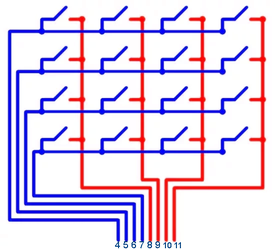Coming changes in the soft skills of business analysts: how to stay ahead
What are soft skills in IT?
IT-soft skills are abilities that demonstrate an individual approach to work and interaction with other people. These skills are more directly related to the candidate's personality characteristics, meaning they remain relevant even if the candidate changes specialization. Examples of IT skills include communication, leadership and problem solving, which can help a candidate appear more desirable than if they simply demonstrated professional skills.
Relevance of soft skills development
In a Forbes article It is noted that when hiring new employees, employers rate soft skills higher than technical ones. Knowing how to code may be critical if you're a software developer, but those skills won't matter if you can't do the soft things: work well in a team, lead a project, communicate clearly, and think critically. Soft skills are especially important if you want to take on more responsibility – this allows you to successfully move from the role of an individual contributor to the role of a leader. Also LinkedIn survey revealed: “Technical capabilities can only take you so far in your career. To truly take off, you need skills that are harder to measure but critical to success. On LinkedIn… According to the report, 89% of recruiters say that when hiring doesn't work, it usually comes down to a lack of soft skills.”
As soft skills play an increasingly important role in employer satisfaction and career advancement, developing these skills sets you up for long-term professional success. Continuous learning and skill development are important for both formal leaders and individuals seeking to succeed in an evolving workplace.
Soft skills business analytics
What soft skills does a business analyst need to ensure project success? Let's look at what key soft skills of IT business analysts are important when working on technical project solutions with the project team and the customer.
Documentation data exchange
The purpose of preparing artifacts is not documentation, but communication. When you intend to communicate with the reader of your document, your artifacts become more meaningful and understandable. I have read several documents written by business analysts and I must say that it was sometimes painful and tiring. Mainly because the documents had pages and pages of text that used complex words, requiring me to consult a glossary to understand what the author was trying to convey.
In other cases, I have read documents in which the author tried to convey a concept in a very simplified way, using a combination of words, diagrams, diagrams, tables and other tools that are much easier to understand when reading. Such writers weave history into their documents, making them easy to read, understand, and reference at a later stage. It is not surprising that terms/methods such as user stories, journey map, customer experience and the like have appeared and are actively used to this day.
Try to communicate through your documents and not just by checking a box to say you created an artifact. This will happen if you look at this aspect of your job through the lens of soft skills.
Identifying requirements and understanding needs
Requirements elicitation is not just a process of gathering information, it is the art of understanding the business from the inside. I don't just conduct interviews, I immerse myself in the business, trying to understand its needs and goals, thereby helping to formulate requirements. Sometimes clients aren't sure what they want or aren't even aware of their needs. In such cases, I encourage them to look into the future, painting a picture of a possible state. My vision helps businesses become aware of the requirements, even if they are not yet mature in their minds. Sometimes the people I work with are stuck in current problems and don't even understand what could be different and need help to see what success might look like.
A business analyst must guide the business and identify requirements. Only then can you question their demands if they do not meet their needs. Otherwise, all you will do as a business analyst: collect requirements, create protocols and collect signatures from everyone, implement functionality on them, and when the business says: “This doesn’t really meet our needs”… You will think : “But I gave you what you asked for.”
Implementation and implementation of changes
Business analysts are in high demand to successfully implement projects and perform time-consuming work aimed at achieving project goals and meeting the expectations of all stakeholders. But BABOK and the global business analyst community define business analysis as follows:
«Business analysis is the practice of enabling change in an enterprise by defining needs and recommending solutions that deliver value to stakeholders. Business analysis enables an enterprise to articulate needs and the rationale for change, and to design and describe solutions that can deliver value». BABOK
Translation: “Business analysis is the practice of driving change in an enterprise by identifying needs and recommending solutions that benefit stakeholders. Business analysis allows an enterprise to articulate needs and rationale for change, and to develop and describe solutions that can deliver value.”
The key words for me here are “enabling change”. If you expand on this concept a little more, you'll realize that a big part of a business analyst's role is to ensure the successful transition of a business from old to new. You will deal with, empathize with, and address the fears, concerns, and uncertainties of end users or other affected parties. It's about building relationships with stakeholders so that they feel safe sharing their concerns with you and trust that you have their best interests in mind. The more they trust you, the better you can facilitate change.
Facilitation of meetings and negotiations
BABOK identifies Negotiation and Conflict Resolution as a key core competency for a Business Analyst. As we identify and manage requirements, it is likely that there will be conflicting requirements from different stakeholders. This is when the business analyst not only gets everyone in one room and conducts a session, but also negotiates and builds consensus among stakeholders. Being a negotiator requires special skills. Be able to do this in such a way that both opposing sides see you as a neutral person and truly impartial. This is only possible if the business analyst has enough emotional intelligence to not take sides or be influenced by personal opinions. It's not about who is right, but what's best for the organization. The business analyst must negotiate in such a way that all stakeholders understand that we are doing the project in the best interests of the organization. It takes a special person to make stakeholders realize this amid their anger or frustration.
Conclusion
The role of a business analyst is always more than requirements, process maps and artifacts in general. The role of a business analyst was, is and always will be challenging and it requires a special personality to be successful in this field. People who think it's only about results and artifacts won't go that far with stakeholders, but building trust and relationships with the business to drive change and create value is what it takes to go the distance and be recognized and valued .
Akmanova Elizaveta
Senior analyst





